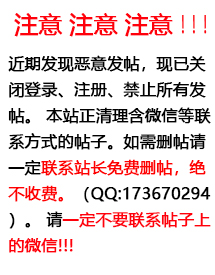


Sorry,was out shopping:What the latest PMIs mean for Asia
Bit of a wobble: Asian PMIs dipped last month. Blame the GoldenWeek. With offices closed in e...



Bit of a wobble: Asian PMIs dipped last month. Blame the GoldenWeek. With offices closed in early October in China, Korea, Taiwan,and beyond, production got disrupted. Well, that’s part of the story. Another is cooling construction activity in China. And yet another isthat exports have lost a bit of their summer shine. So, momentum iseasing into year-end. Curiously, activity elsewhere remains robust,yet that’s somehow bypassing producers in emerging Asia. Plus,price pressures haven’t pulled back as much as one might havehoped. Bottom line: developed markets bouncy, emerging Asia alittle more, well, flouncy. Hardly a stumble, but no signal either of animminent acceleration in the East. First heatmap. Headline PMIs across Asia got knocked down a bit. The exception is thePhilippines where the economy continues to fly. Japan also continues to perform well, with thePMI only pulling back marginally. Malaysia and Thailand are below the waterline; India,Indonesia, and Korea are floating just above. China’s NBS dipped to a three month low:presumably reflecting the Golden Week holiday and potentially local industry shutdowns duringthe Party Congress in Beijing. The Caixin measure was unchanged, if uninspiring. What a contrast to the West. Sure, the headline ISM pulled back from its 13-year high, but the USPMI ticked higher. Germany’s eased but it’s still above 60. Pretty robust all around. New orders paint a similar picture. Down for the most part (chart 1). That suggests that the GoldenWeek is not entirely to blame for Asia’s PMI wobble. For emerging Asia as a whole, new orderspulled back relative to inventory, though that’s still consistent with a mild acceleration in industrialproduction over the coming months (Chart 2). Second heatmap. Asia quite mixed: new export orders accelerated in Indonesia, the Philippines,and Vietnam. But they contracted again in India, Korea, and Malaysia. China’s two measuresdiverged, but on average they point lower as well (although, on the export side we’d give a littlemore weight to the Caixin gauge). Note the divergence between emerging Asia and advanced economies: the former has seen newexport orders fizzle, while the latter's sizzle (chart 3). The current cycle is benefitting exportersfrom developed markets more, possibly reflecting the ongoing (and potentially accelerating)demand from China for advanced machinery and equipment. President Xi Jinping’s speech at theParty Congress suggests even more aggressive technological upgrading is to be expected. Employment is telling a similar tale: tight markets in the mature economies, looser ones inemerging Asia. Manufacturers are hiring briskly in Japan as well, but still shedding workers inChina, Indonesia, Korea, Malaysia, and Thailand. Presumably, new export orders, and overalltrade performance, will need to step up durably in order to fire up employment in the lattereconomies.
声明:如本站内容不慎侵犯了您的权益,请联系邮箱:wangshiyuan@epins.cn 我们将迅速删除。
 热词推荐
热词推荐
MORE+
- 1中公呢:说它是垃圾股,因为长时间阴跌;说它是一个好股票,因为它每一次都会让你赚钱(亚夏汽车002607)
- 2发现没有,很多票现在这么玩,第一季度盈利,第二季度盈利,第三季度盈利,第(亚夏汽车002607)
- 3我来说说世纪华通为什么开板?(世纪华通002602)
- 4我个人不喜欢炒小盘和概念类业绩差的股票,但是这些票真要玩就要跑的快,要灵活,要把(世纪华通002602)
- 5重大好消息!明天涨停(世纪华通002602)
- 6抖音平台九一开分成,对小游戏头部玩家三七算是大利好,也减小对微信一个平台的依赖,(三七互娱002555)
- 7股票这个东西是刚开始非常难什么都要学,历史,政治,大宗商品,交易心理学,(三元生物301206)
- 8财务美化是个好东西三元生物的年报毛利率只有3!也就是说扣除人工房租生产成本后三元(三元生物301206)
- 9早盘波大侠建仓了中信海直今天低空经济板块不错,选择了龙头中信早在前几日就一直在关(中信海直000099)
- 10自己看下下午的分时就知道了 2:26和 2:33. 分的时候,每次有人想(设计总院603357)
- 11商用密码+华为概念+信创+国产软件格尔软件触及涨停。近一年涨停4次。异动原因揭秘(格尔软件603232)
- 12主力还比我们小散急日月从2月6号转势开始成交量稳步放大'从原来的每天1亿多到今天(日月股份603218)
- 13这是只潜力大牛股,目前已经改变了前期长期下跌趋势,从前段时间突破重要技术线来看,(日月股份603218)
- 14新产品磷酸锰铁锂碳拉米电池!供不应求!固态电池!产值百亿元(日播时尚603196)
- 15早盘介入,网达软件该股趋势不错,只要大盘不调整,下午就有望封板。[胜利]恭喜同车(网达软件603189)
- 16昨天T飞了网达软件的低仓今天13块再补回来还做14到14.4的突破预期[加油]长(网达软件603189)
- 17这是什么破玩意,涨不动,跌起来贼6@驹哥哥 @老乡别走马上拉升 @菜鸟霸王(新泉股份603179)
- 18如果你打算将炒股进行到底,那么这篇文章建议看三遍!或许不能帮助你一跃成为高手,但(维远股份600955)
- 19早评:众多利空来袭!A股迎来关键时刻周五,美股和富时中国A50以及恒生科技指数期(维远股份600955)
- 20后续持续调整为主(bk0475)(04-27)
- 21这几天在调整的时候,就可以买点。一般而言,股价创新高后,回调整理一段时间(中国海油600938)
- 223月份三桶油年报全部披露完毕,仅有中国石油年报业绩实现正增长。我们来瞧一下三桶油(中国海油600938)
- 23老头原来不是在中石化唱多的么?活活把中石化从7块唱回了5块。这次又来中海(中国海油600938)
- 24股吧都不热闹,不少人离场了吧,都在等回调,可惜马上又要新高了 (中国海油600938)
- 25咱们就守着海油,不去外面当接盘侠 (贵州茅台600519)
- 26国际原油价格高位运行助推中国海油迈向新台阶。(中国海油600938)
- 27自30.88涨停日以来,净增仓0股,成本由16.228元下降0.595元至15.(中国海油600938)
- 28国际原油暴跌,逢低买入中国海油机不可失。(中国海油600938)
- 29药明今天做了倒差价多了0.21[哭][哭][哭] (中国海油600938)
- 30中国海油的大跌为踏空的投资者提供了买入机会。(中国海油600938)
- 上海贝岭股吧
- 浙大网新股吧
- 华东科技股吧
- 隧道股份股吧
- 深赛格股吧
- 光大银行股吧
- 中国银行股吧
- 永鼎股份股吧
- 苏州高新股吧
- 新安股份股吧
- 精达股份股吧
- 中国医药股吧
- 东风科技股吧
- 金健米业股吧
- 西部资源股吧
- 招商银行股吧
- 中联重科股吧
- 中国宝安股吧
- 中集集团股吧
- 德赛电池股吧
- 复星医药股吧
- 宇通客车股吧
- 中国建筑股吧
- 葛洲坝股吧
- 大唐电信股吧
- 华丽家族股吧
- 罗牛山股吧
- 中色股份股吧
- 京东方A股吧
- 新疆天业股吧
- 天坛生物股吧
- 抚顺特钢股吧
- 锦龙股份股吧
- 云天化股吧
- 振华科技股吧
- 国中水务股吧
- 华发股份股吧
- 飞乐音响股吧
- 青岛双星股吧
- 中国核电股吧
- 中国中铁股吧
- 西部矿业股吧
- 时代新材股吧
- 科达股份股吧
- 士兰微股吧
- 浦发银行股吧
- 中金黄金股吧
- 哈投股份股吧
- 航天晨光股吧
- 同仁堂股吧
- 维维股份股吧
- 福耀玻璃股吧
- 新五丰股吧
- 中航资本股吧
- 中金岭南股吧
- 丰原药业股吧
- 四环生物股吧
- 哈药股份股吧
- 万向钱潮股吧
- 中国高科股吧


